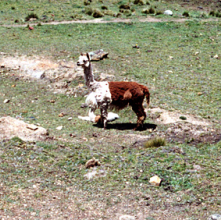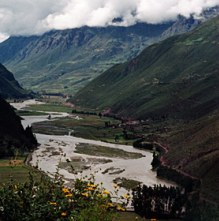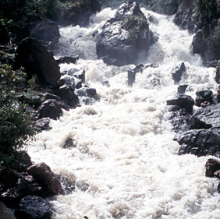explore
Andean Highlands - Terrain

The Andes are 96 km wide at the Peru - Ecuador border, and broaden gradually southwards where they are almost 320 km wide near Lake Titicaca. The western range is called the Cordillera Negra. The eastern range is higher, and is called the Cordillera Blanca. The Cordillera Blanca has a number of snow-capped peaks, the tallest of which is Mount Huascaran, at 6768 m high. In the south the two ranges divide to form the altiplano, the high plains over 800 km in length. Between Peru and Bolivia lies Lake Titicaca, which is the highest body of water in the world.
Image: A female alpaca stands guard over her resting cria (baby) surrounded by a broad area of altiplano.

Many rivers dissect the highlands. The high mountain valleys, which were and continue to be farmed, are the location of the majority of settlements. With the help of irrigation and terracing, the valley bottoms and surrounding slopes were also cultivated. Higher on the plateaus or punas people live at 4572 m or higher, and herds of llamas and alpacas graze on low grasses.
Image: The southern part of the Urubamba River, called at that point the Vilcanota, as seen from the Inka ruins of Pisac. Part of the Amazon drainage system, this section of the 725 km long Urubamba flows through the south central Andes in an area densely settled today by indigenous farmers

The highland landscape is full of contrasts, ranging from the high rolling plains, to snow-capped mountain peaks and fertile mountain valleys. It has always been a harsh environment in which to live. The rainy season is from December to March, and additional water occurs in April and May when the snow on the higher slopes melts. Too little rain can cause crops to fail, and heavy rain can cause landslides that can bury villages. While there are some areas where the soil is fertile, often people have been forced to live in areas of poorer soil.
Image: At an elevation of around 4500 m, a torrent of water surges down from still higher elevations where snow has begun melting.